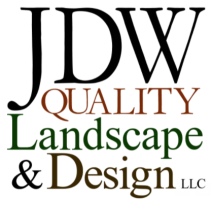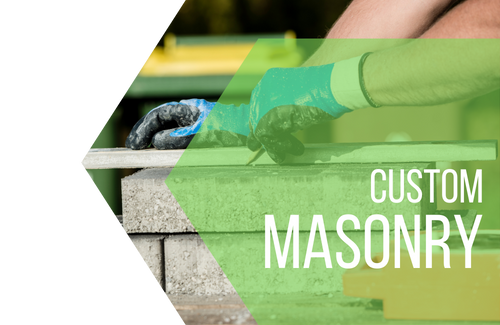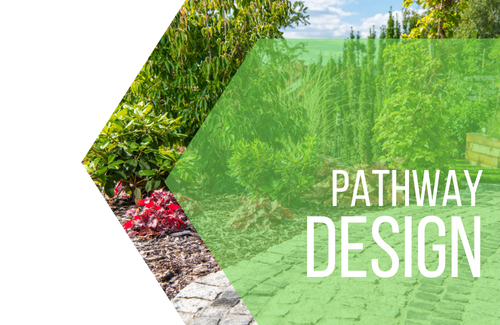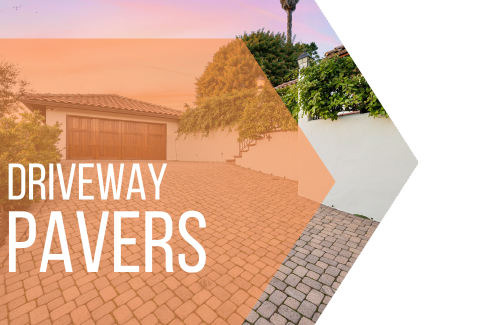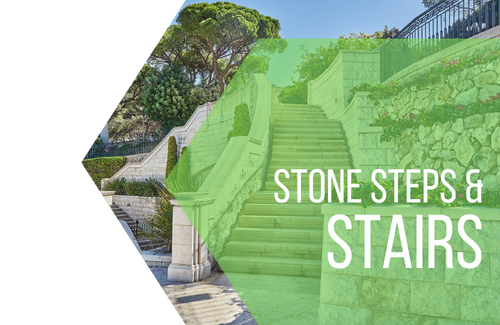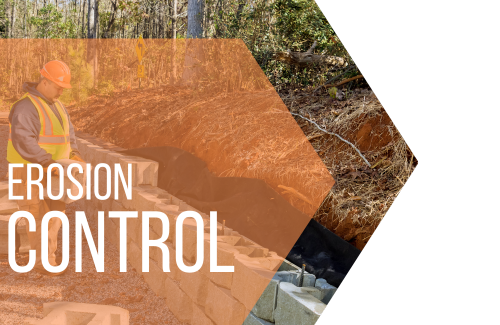JDW Quality Landscape & Design, LLC
A Modern Company with Time Tested Solutions
Retaining Wall Installation in Glen Burnie, MD
Located in Glen Burnie and proudly serving: Annapolis, Catonsville, Columbia, Elkridge, Hanover, Linthicum, Linthicum Heights, Pasadena, Severn, Severna Park and the entire Baltimore Metropolitan area.
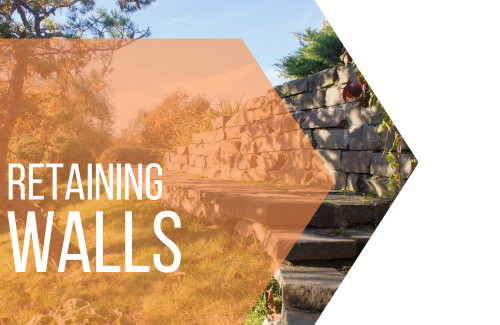
Retaining walls are essential features that provide both structural support and aesthetic appeal for your outdoor spaces. Whether you’re managing sloped terrain or looking to enhance your property’s landscaping, professional retaining wall installation in Glen Burnie, MD ensures a durable and attractive solution. At JDW Quality Landscape & Design, we specialize in crafting custom retaining walls that combine functionality with visual appeal, tailored to the unique needs of your property.

Or Message Now:
The Retaining Wall Installation Process
Building a retaining wall is a detailed process that requires precision, expertise, and the right materials. Here’s an overview of how professional retaining wall installation in Glen Burnie, MD is completed by JDW Quality Landscape & Design.
- Initial Consultation and Site Assessment
The process begins with an on-site consultation to evaluate your property’s terrain, drainage, and specific needs. Our team discusses your goals, preferences, and budget to develop a plan tailored to your requirements. During this phase, we identify potential challenges, such as steep slopes or poor soil conditions, and recommend solutions to address them
- Design and Planning
Based on the site assessment, our team creates a detailed design for your retaining wall. This includes choosing the appropriate materials, layout, and height, as well as planning for any additional features like tiered landscaping or integrated drainage systems. We ensure the design complements your property’s aesthetic while meeting all structural and safety requirements.
- Site Preparation
Before construction begins, the site is cleared and leveled to create a stable foundation. This step often involves removing vegetation, debris, and any existing structures in the area. Proper site preparation is critical to the longevity of the retaining wall.
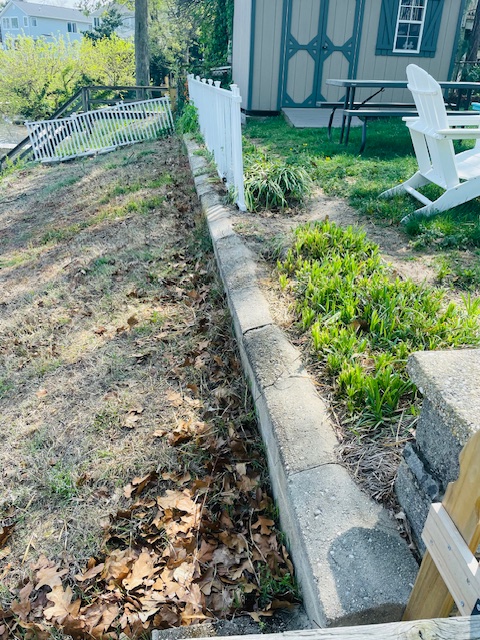
- Base Installation
A strong base is essential for supporting the weight of the retaining wall. Our team lays a foundation of compacted gravel or crushed stone to ensure stability and prevent shifting over time. The base is carefully leveled to provide a solid footing for the wall’s construction.
- Wall Construction
Using the selected materials, our skilled builders construct the retaining wall layer by layer. Whether working with stone walls, segmental blocks, or reinforced concrete, precision is key to achieving a durable and visually appealing result. For taller walls, additional reinforcements like geogrid or tiebacks are incorporated for extra support.
- Drainage Integration
Drainage is a critical component of retaining wall construction. To prevent water buildup behind the wall, we install features such as perforated pipes, gravel backfill, or weep holes. These systems ensure proper water flow, reducing pressure on the wall and minimizing the risk of erosion or structural failure.
- Finishing Touches
Once the wall is constructed, we clean the site and add final details, such as landscaping or decorative accents. This ensures the retaining wall not only functions effectively but also enhances the beauty of your outdoor space.
Retaining Walls for Erosion Control
One of the most important benefits of retaining walls is their ability to combat soil erosion. In areas like Glen Burnie, where heavy rainfall and uneven terrain are common, retaining walls provide essential protection for properties.
Preventing Soil Displacement
Without proper support, soil on sloped landscapes can shift or wash away, damaging plants, walkways, and even the foundation of your home. Retaining walls act as a barrier, holding soil in place and preventing erosion that could compromise your property’s integrity.
Improving Drainage
Poor drainage is a leading cause of erosion. Retaining walls are designed to redirect water flow, guiding it away from vulnerable areas and into designated drainage systems. Features like permeable pavers or gravel backfill further enhance water management, ensuring your property remains safe and stable.
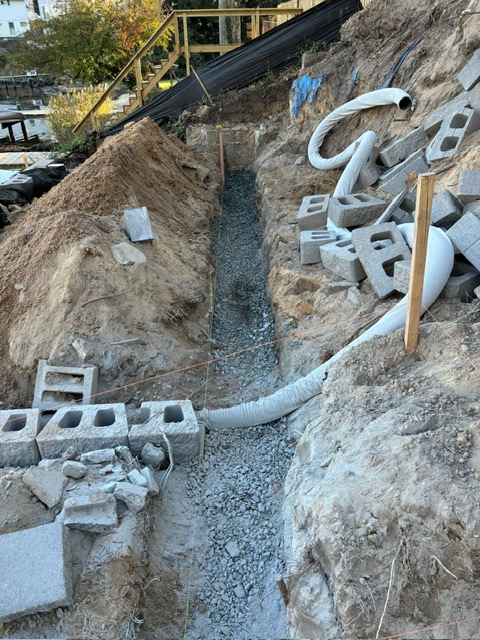
Creating Tiered Landscaping
For steep slopes, retaining walls can be used to create tiered levels, reducing the risk of erosion while adding visual interest to your yard. These levels can be transformed into gardens, seating areas, or pathways, combining functionality with beauty.
The Purpose and Benefits of Retaining Walls
Retaining walls serve multiple purposes, from preventing erosion to maximizing the usability of outdoor areas. Here’s why these structures are a valuable addition to your property:
Structural Stability
For properties with uneven or sloped terrain, retaining walls provide essential support to prevent soil displacement and maintain landscape integrity. Without this stabilization, slopes can become hazardous, leading to potential property damage. Properly constructed walls ensure your outdoor space remains safe and functional.
Erosion Control
One of the primary roles of retaining walls is to combat soil erosion. Heavy rains, poor drainage, or steep inclines can result in soil washing away, jeopardizing plant life and nearby structures. Retaining walls act as a barrier, redirecting water and securing soil to keep your property intact.

Enhanced Visual Appeal
Retaining walls are not just practical; they also add an element of sophistication to your landscape. Using materials like natural stone, brick, or textured concrete, these walls can complement any architectural style. A well-designed retaining wall can transform your yard into a visually stunning outdoor space.
Maximized Usable Space
Sloped properties often have areas that are difficult to utilize. Retaining walls create level surfaces, opening up possibilities for gardens, patios, or seating areas. This not only enhances the functionality of your property but also boosts its overall value.
Types of Retaining Walls
When considering retaining wall installation in Glen Burnie, MD, it’s important to select the right type of wall for your needs. JDW Quality Landscape & Design offers a variety of retaining wall options to suit every property.
Gravity Retaining Walls
Gravity retaining walls rely on their weight and mass to hold back soil. Often constructed with heavy materials like stone or concrete, these walls are durable and visually appealing.
- Best For: Low to moderate slopes, decorative landscaping.
- Materials: Natural stone, concrete blocks, or brick.
Gravity walls are a great choice for homeowners looking to combine strength with timeless aesthetics.
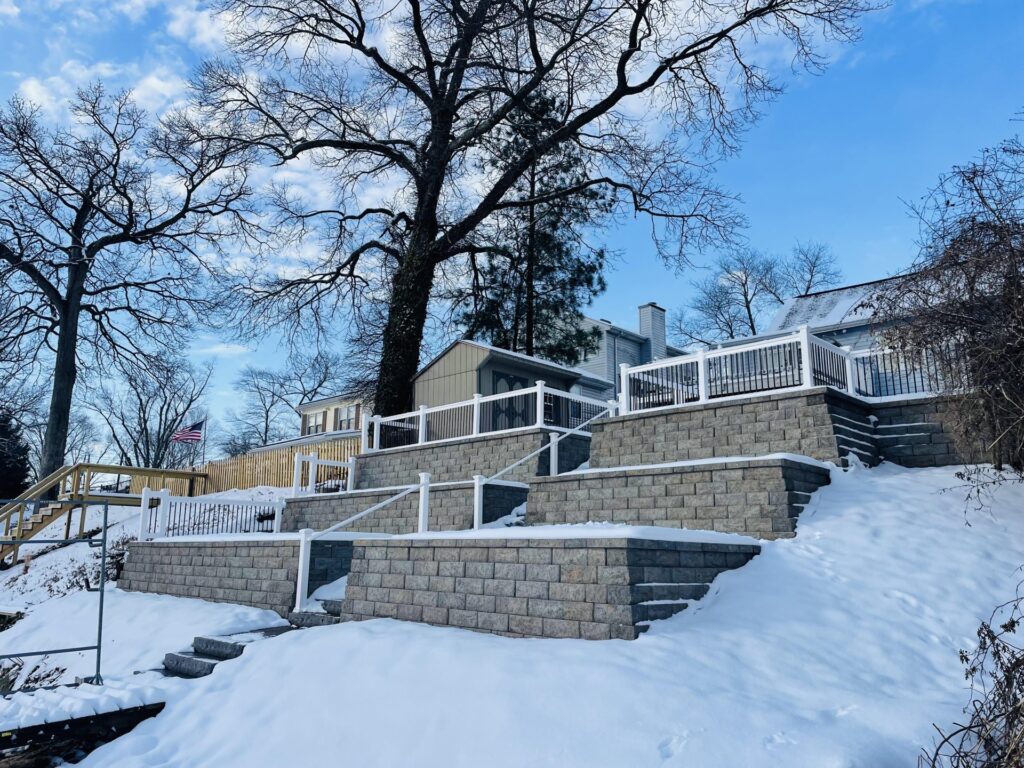
Reinforced Retaining Walls
For areas requiring additional structural support, reinforced retaining walls use anchors, geogrid, or other reinforcements to handle heavy loads.
- Best For: High-load areas, commercial properties, or steep inclines.
- Materials: Reinforced concrete, steel-tied blocks, or treated wood.
Professional retaining wall builders ensure these walls are both functional and visually appealing, meeting safety standards while enhancing your property.
Segmental Retaining Walls
These modular systems use interlocking blocks to create highly customizable walls. Custom retaining walls built with segmental designs are versatile, durable, and suitable for both residential and commercial properties.
- Best For: Tiered landscaping, erosion control, and modern designs.
- Materials: Precast concrete blocks, available in a variety of colors and textures.
Segmental retaining walls offer flexibility in design while delivering the structural stability you need for challenging terrain.
Design Considerations for Retaining Walls
Creating a retaining wall involves more than just functionality—it’s about ensuring the design complements your landscape and meets your unique requirements. Here are key factors to consider:
Material Selection
The material you choose plays a critical role in the wall’s durability and appearance. Natural stone offers a rustic, elegant look, while concrete and brick provide modern versatility. The right material should align with your property’s aesthetic while meeting structural demands.
Height and Layout
The height of your retaining wall affects its design and complexity. For walls under four feet, simple gravity or segmental designs are often sufficient. Taller walls may require reinforcements and permits to ensure they meet local building codes.
- Tiered Walls: For steep slopes, tiered designs distribute the load across multiple levels, adding dimension and interest to your landscape.
Drainage Integration
Effective drainage is critical for the longevity of retaining walls. Features like weep holes, gravel backfill, or drainage pipes prevent water buildup, reducing the risk of structural failure.
Aesthetic Integration
Retaining walls should blend seamlessly with the surrounding landscape. Matching the wall’s material and design to nearby features, such as patios or walkways, creates a cohesive and visually appealing outdoor space.
The Retaining Wall Installation Process
Building a retaining wall is a detailed process that requires precision, expertise, and the right materials. Here’s an overview of how professional retaining wall installation in Glen Burnie, MD is completed by JDW Quality Landscape & Design.
- Initial Consultation and Site Assessment
The process begins with an on-site consultation to evaluate your property’s terrain, drainage, and specific needs. Our team discusses your goals, preferences, and budget to develop a plan tailored to your requirements. During this phase, we identify potential challenges, such as steep slopes or poor soil conditions, and recommend solutions to address them.
- Design and Planning
Based on the site assessment, our team creates a detailed design for your retaining wall. This includes choosing the appropriate materials, layout, and height, as well as planning for any additional features like tiered landscaping or integrated drainage systems. We ensure the design complements your property’s aesthetic while meeting all structural and safety requirements.
- Site Preparation
Before construction begins, the site is cleared and leveled to create a stable foundation. This step often involves removing vegetation, debris, and any existing structures in the area. Proper site preparation is critical to the longevity of the retaining wall.
- Base Installation
A strong base is essential for supporting the weight of the retaining wall. Our team lays a foundation of compacted gravel or crushed stone to ensure stability and prevent shifting over time. The base is carefully leveled to provide a solid footing for the wall’s construction.
- Wall Construction
Using the selected materials, our skilled builders construct the retaining wall layer by layer. Whether working with stone walls, segmental blocks, or reinforced concrete, precision is key to achieving a durable and visually appealing result. For taller walls, additional reinforcements like geogrid or tiebacks are incorporated for extra support.
- Drainage Integration
Drainage is a critical component of retaining wall construction. To prevent water buildup behind the wall, we install features such as perforated pipes, gravel backfill, or weep holes. These systems ensure proper water flow, reducing pressure on the wall and minimizing the risk of erosion or structural failure.
- Finishing Touches
Once the wall is constructed, we clean the site and add final details, such as landscaping or decorative accents. This ensures the retaining wall not only functions effectively but also enhances the beauty of your outdoor space.
Retaining Walls for Erosion Control
One of the most important benefits of retaining walls is their ability to combat soil erosion. In areas like Glen Burnie, where heavy rainfall and uneven terrain are common, retaining walls provide essential protection for properties.
Preventing Soil Displacement
Without proper support, soil on sloped landscapes can shift or wash away, damaging plants, walkways, and even the foundation of your home. Retaining walls act as a barrier, holding soil in place and preventing erosion that could compromise your property’s integrity.
Improving Drainage
Poor drainage is a leading cause of erosion. Retaining walls are designed to redirect water flow, guiding it away from vulnerable areas and into designated drainage systems. Features like permeable pavers or gravel backfill further enhance water management, ensuring your property remains safe and stable.
Creating Tiered Landscaping
For steep slopes, retaining walls can be used to create tiered levels, reducing the risk of erosion while adding visual interest to your yard. These levels can be transformed into gardens, seating areas, or pathways, combining functionality with beauty.
Design Ideas for Custom Retaining Walls
Retaining walls don’t have to be purely functional—they can also serve as stunning focal points for your landscape. Here are some design ideas to inspire your project:
Multi-Material Walls
Combine materials like natural stone and concrete for a unique, modern look. The contrast between textures and colors adds depth and visual interest, making your retaining wall a standout feature.
Integrated Seating
Incorporate built-in benches or seating areas into your retaining wall design. This is a practical and stylish way to maximize the functionality of your outdoor space, especially for gardens or patios.
Vertical Gardens
Transform your retaining wall into a living wall by adding planters, trellises, or climbing plants. This eco-friendly option softens the appearance of the wall while adding a touch of greenery to your yard.
Lighting Accents
Highlight your retaining wall with integrated lighting, such as LED strips or recessed fixtures. This not only enhances safety but also creates a dramatic effect that showcases your wall’s design at night.
Why Choose JDW Quality for Retaining Wall Installation in Glen Burnie, MD?
JDW Quality Landscape & Design is the trusted choice for professional retaining wall installation in Glen Burnie, MD. Here’s what sets us apart:
Skilled Craftsmanship
Our team combines years of experience with expert techniques to deliver retaining walls that are both durable and visually stunning. Every project is completed with precision and attention to detail, ensuring a flawless result.
Custom Solutions
We understand that every property is unique. That’s why we offer fully customized retaining wall designs tailored to your specific needs, preferences, and budget. Whether you’re looking for a functional barrier or an eye-catching feature, we bring your vision to life.
Quality Materials
At JDW Quality, we use only the highest-quality materials, including natural stone, concrete blocks, and brick, to ensure your retaining wall stands the test of time. Our commitment to excellence ensures a finished product you can rely on for years to come.
Local Expertise
As a Glen Burnie-based company, we understand the region’s terrain and climate, allowing us to recommend the best materials and construction methods for your property. Our local knowledge ensures your retaining wall is built to last, no matter the challenges.
Eco-Friendly Retaining Wall Solutions
For environmentally conscious homeowners in Glen Burnie, incorporating sustainable practices into your retaining wall design can enhance both functionality and environmental impact. Here are a few eco-friendly options to consider:
Permeable Retaining Walls
Permeable retaining walls are designed to allow water to pass through their structure, reducing runoff and preventing soil erosion. These walls are especially beneficial in areas prone to heavy rainfall, as they improve drainage and help replenish groundwater. Using materials like permeable pavers or natural stone ensures durability while minimizing environmental impact.
Recycled Materials
Incorporating recycled materials, such as reclaimed stone or concrete, is an excellent way to reduce waste while adding character to your retaining wall. Reclaimed materials often feature unique textures and colors that enhance the aesthetic appeal of the wall, giving your property a distinctive look.
Green Walls
For a truly sustainable design, consider transforming your retaining wall into a green wall. By integrating planters, trellises, or pockets for vegetation, you can create a living wall that promotes biodiversity and improves air quality. Green walls also help regulate temperature, making them a practical and eco-friendly addition to your landscape.
Solar-Powered Lighting
Adding solar-powered lights to your retaining wall not only enhances its visual appeal but also reduces energy consumption. Solar lights are ideal for highlighting pathways, tiered landscaping, or seating areas while contributing to a sustainable design.
Common Challenges in Retaining Wall Installation
Installing a retaining wall can be complex, especially for properties with challenging terrain or unique requirements. Here are some common challenges and how JDW Quality Landscape & Design addresses them:
Poor Soil Conditions
Soil that is too sandy, clay-rich, or loose can compromise the stability of a retaining wall. Our team conducts a thorough site assessment to evaluate soil conditions and recommend appropriate reinforcements, such as geogrid or compacted backfill, to ensure the wall’s integrity.
Drainage Issues
Without proper drainage, water can accumulate behind the retaining wall, increasing pressure and leading to structural failure. We integrate drainage solutions like perforated pipes, gravel backfill, and weep holes to manage water flow effectively.
Steep Slopes
Steep slopes require specialized designs to distribute weight and prevent soil displacement. Our team often employs tiered retaining walls or reinforced systems to address these challenges, creating a safe and visually appealing solution.
Permitting and Compliance
Certain retaining walls, especially those over four feet tall, may require permits and adherence to local building codes. As experienced retaining wall builders in Glen Burnie, MD, we handle all necessary permits and ensure compliance with regulations, saving you time and hassle.
Maximizing Retaining Wall Functionality
To get the most out of your retaining wall, consider incorporating additional features that enhance its usability and aesthetic appeal:
Seating Walls
Retaining walls can double as seating areas, providing a practical and attractive solution for outdoor entertaining. Adding built-in benches or flat-topped stone walls around patios or gardens creates functional spaces for relaxation or socializing.
Built-In Lighting
Integrated lighting enhances the safety and ambiance of your retaining wall. Options include recessed lights, LED strips, or solar-powered fixtures, which can highlight architectural details and improve visibility at night.
Multi-Level Walls
For properties with significant elevation changes, tiered retaining walls offer both functionality and design interest. Each level can be landscaped with plants, flowers, or even small water features, turning a challenging slope into a beautiful and usable space.
Integrated Steps
Incorporating steps into your retaining wall design improves accessibility while adding a stylish feature to your landscape. Whether constructed from natural stone or precast concrete, steps can seamlessly blend with the wall’s materials for a cohesive look.
Retaining Walls for Commercial Properties
While retaining walls are a common feature for residential properties, they also offer significant benefits for commercial spaces in Glen Burnie, MD. Here’s why businesses should consider investing in retaining wall solutions:
Improved Accessibility
For commercial properties with sloped parking lots or uneven terrain, retaining walls can create flat, accessible areas for parking, walkways, or outdoor seating. This improves usability and ensures compliance with accessibility standards.
Enhanced Curb Appeal
A well-designed retaining wall can elevate the appearance of a commercial property, creating a polished and professional look. Materials like stone or brick add an upscale aesthetic that appeals to clients and customers.
Erosion Prevention
Retaining walls help protect commercial properties from erosion caused by heavy rainfall or poor drainage. By stabilizing slopes and redirecting water flow, these walls safeguard infrastructure and landscaping.
Functional Landscaping
For businesses looking to maximize outdoor space, retaining walls can be used to create tiered gardens, signage backdrops, or seating areas. These features add functionality while enhancing the overall ambiance of the property.
Contact Us for Retaining Wall Installation in Glen Burnie, MD
Transform your property with professionally designed and built retaining walls from JDW Quality Landscape & Design. Whether you’re addressing structural concerns, preventing erosion, or enhancing your outdoor space, our team delivers exceptional results tailored to your needs.
Call us today at 443-782-5489 or fill out our online form to schedule a consultation. With our expertise in retaining wall installation in Glen Burnie, MD, we’ll create a solution that combines durability, functionality, and aesthetic appeal.
The service was outstanding. I got a personal plan developed that met my needs and budget.
Raleigh J. in Severn, MD

Call today to experience the JDW Quality and Design difference! Find out why “Quality” is our middle name!
ROOTED IN THE COMMUNITY



SERVICE AREA
We service the entire Baltimore Metropolitan area, including:
- Annapolis, MD
- Catonsville, MD
- Columbia, MD
- Elkridge, MD
- Glen Burnie, MD
- Hanover, MD
- Linthicum, MD
- Linthicum Heights, MD
- Pasadena, MD
- Severn, MD
- Severna Park, MD
JDW QUALITY LANDSCAPE & DESIGN, LLC
Call today to experience the JDW Quality and Design difference! We believe in delivering friendly service with a smile. Find out why “Quality” is our middle name!
Contact Info
Glen Burnie, MD 21061
